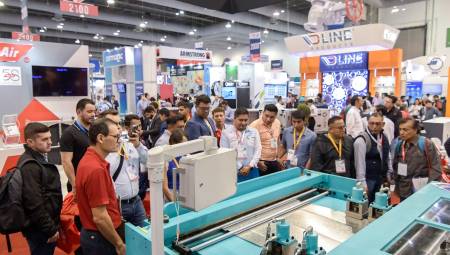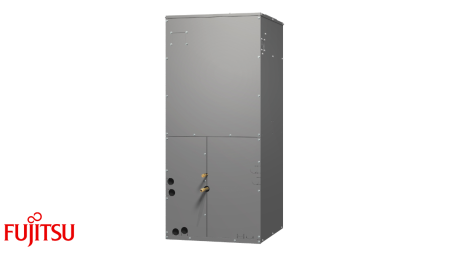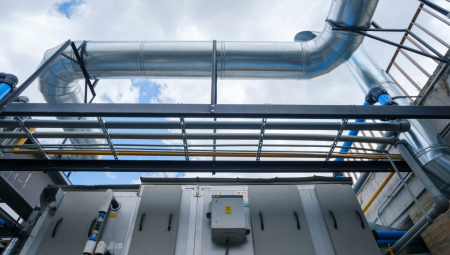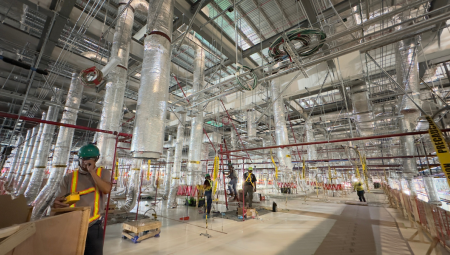 In the first part of this topic, the author highlighted aspects related to the importance of heat and cold in our environment and the different types of technology currently existing to control or generate it in different spaces.
by René Ruano Domínguez*
In the first part of this topic, the author highlighted aspects related to the importance of heat and cold in our environment and the different types of technology currently existing to control or generate it in different spaces.
by René Ruano Domínguez*
The topic will now be addressed from the different forms of transmission, and another important aspect such as energy saving will be deepened.
Heat is transmitted from one point in space or surface to another. That is why this article is entitled Heat Transmission, since it aims to explain the essential knowledge that we must manage to control and take advantage of this physical phenomenon for our benefit.
Heat is transmitted because there is a temperature difference between two points in space or surface. If there is no difference in temperatures, there is no potential to generate heat transmission, in the same way that if there is no slope, a body does not fall. Heat is transmitted in three ways: through solid surfaces, which is known as conduction transfer. in the space or environment surrounding a hot body or from one point to another.
The air that comes into contact with the hot body, in turn heats up, and becomes less dense (lighter), creating a potential for flow circulation from the hottest point to the coldest point, the latter, where the air has a higher density. Thus the heat is transported with the flowing current of air. This form of transmission is known as convection.
Hot bodies emit caloric radiation. We can observe them when we guide the car or car in the middle of summer, with high temperatures, as the surface of the road or road radiates heat to the environment. And if we approach a metal melting furnace, in areas of little or no insulation, there are times when we can not continue advancing because the level of radiation is such that the human body does not support such high temperature values. In these examples, heat is transmitted by radiation.
Each of these forms or processes of heat transmission obey physical laws and can be measured. Therefore, we can also calculate them and know how much heat is transmitted.
So, what benefits does it bring to energy efficiency and the reduction of CO2 emissions, knowing about heat, its transmission and thermal insulation?
In a heating process, a volume of fuel is burned to heat a substance or material. The heat that is generated in combustion has the objective of performing a main process - heating the substance or material. To the extent that we use a volume closer to what theoretically requires the main process, the more economical and efficient the operation will be. Of course, more efficiency, less fuel burned, and less CO2 emitted into the atmosphere.
Remember that each unit of fuel burned generates heat and emits CO2
as a result of the combustion process.
If the heat that is generated in the combustion, intended for the main process, escapes and heats the atmosphere or the environment outside the equipment, each unit of energy that is lost stops performing the main work. In the end, less efficiency, more emissions. The function of thermal insulation is to reduce the escape of energy outside the equipment or systems where heat is generated.
Thermal insulation, while performing the function of conserving energy, also performs a safety function, preventing people from coming into contact with hot surfaces and a painful accident occurs.
Thermal insulation, materials and their forms
Knowing the importance of knowing about thermal insulation, let's talk about the materials used to isolate heat, the technical units that will be needed to measure the insulating properties and the calorific flow.
Insulating materials are of natural origin, previously treated, or are synthetic materials. They are selected based on the energy work they have to do. There are different materials for different temperature regimes. So you have to know its properties to be able to differentiate each material according to the mission it will perform.
For high temperatures in the metallurgical and steel industry, the well-known refractory materials are used, which have to withstand temperature values close to 2000ºC and of course, with a high level of resistance to erosion and mechanical breakage. For its manufacture refractory clays, kaolins, magnesite, dolomite, quartzite, which are inorganic compounds composed of calcium, magnesium, chromium, zirconium, silicon, carbon, and others.
Refractory granular materials are also formed that are composed of mixtures of magnesite, chromite, dolomite calcining powders with an organic or inorganic binding material.
The structure of insulating materials has different shapes, including:
- Cellular: reticular structure, with small spaces filled with air, partial or independent of each other.
- Fibrous: materials such as mineral wool, fiberglass, where the circulation of air within the material depends on compression.
- Granular: includes powdered materials or grains, such as resins.
- Reflexive: formed by a set of thin layers of low emissivity.
Insulating materials can be of different physical forms:
- Solid: the refractory bricks and staves that line the pipes
circular, or aluminum sheets that reflect caloric radiation.
- Loose filling: granular materials, expanded perlites and silica aerogel.
- Fluffy: elastomeric foams for cold pipe coatings mainly.
- Flexible: mineral wool and fiberglass blankets.
- Pastes or cements: mortars and insulating pastes, which are used to cover the walls and support refractory bricks.
What qualities should a good isolation meet?
- High thermal resistance or what is the same, low thermal conductivity.
- High resistance to the permeability of water vapor.
- High fire resistance, very important.
- Optimal bulk density.
- Resistant to erosion, mechanical shocks, chemical agents, water absorption, environmental conditions and acceptable durability.
- Ease in its application and handling.
- That they do not harm human health and are not toxic.
- Acceptable cost and that facilitates a recovery of the initial investment within profitable limits.
Proceeds
And what benefits does it bring to our economy and that of the family? Knowing about the different ways we can reduce heat losses becomes an advantageous economic benefit for everyone. Each unit of energy that is used, equals less fuel burned, which reduces the expense and the energy bill.
With each passing day, fossil fuel prices reach higher prices, it's incredible. Current retail prices for petrol, motor diesel and heating, electricity, LPG and natural gas continue to rise and there is no clear idea when the rise will stop or reverse. And there are not many differences between the different markets, both in Europe, in Asia, Africa and in America.
Then, each unit of energy we save has an impact on the energy bill that we all pay monthly. In summer we avoid losses of cold, (or heat infiltrations) in the air conditioning system, less kWh consumed and less payment for the electricity bill.
In the winter we reduce the losses in the heating system of the premises, correctly insulating the walls and avoiding the infiltrations of cold air inside, less liters or kg of fuel, you have to burn less electricity. Each unit of fossil energy that is not burned is equivalent to emitting less CO2 into the atmosphere.
If we operate an industrial or commercial system, a plant or equipment that consumes energy to generate or transport heat or cold and prevent heat leaks, we raise its energy efficiency and directly its economic efficiency. This reduces the energy cost in the product or service.
Each unit of fossil heat that we avoid is lost has associated a volume of CO2 that is no longer emitted into the atmosphere, hence we will be relieving the environmental pollution that in an induced way will always occur when burning fossil fuels.
Conclusion
The management of heat and cold is beneficial for everyone, for the economy in general, to reduce the monthly payment bills of our families, alleviate the severity of the pollution that is hitting us hard and without distinction of nationality and race.
Every penny we dedicate to reducing fossil consumption and environmental pollution, we will be investing and multiplying in added value, in our children, grandchildren, in the future of the planet. It is a way of being able to cooperate with our environmental responsibility.
* He has more than 35 years of experience in actions in energy systems and equipment, both in those that use fossil energy and renewable sources. He started as an operator, later a technologist and technical manager in the fuel conversion and refining industry. He has been founder and technical manager of several energy engineering teams aimed at the project, assembly and technical services in heat and cold systems. He has carried out multiple actions in projects, execution and services of general energy engineering. He is the founder and Principal Engineer of General Energy Engineering. ([email protected] - www.energianow.com).













